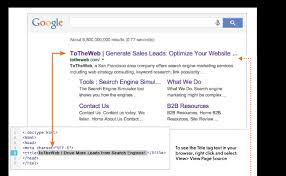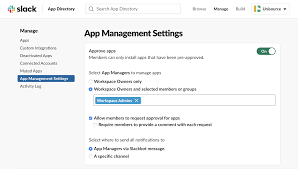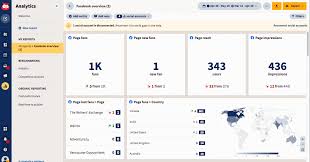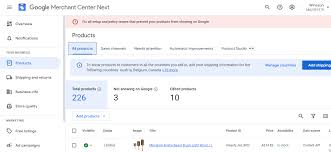Writing an effective knowledge base article is ensuring the content is clear, informative and engaging for your audiences. A good and knowledge based article can greatly increase user experiences and reduce support queries.
With a dash know-how and the right approach, you can scribe articles to boost your employees and customers experience with little stress and with the using of AI-powered tools you can write more effective with time-saving generate content and increase your content strategy.
In this article, we’ll elaborate about how can you write an effective and a good knowledge base article with example and by using tools and with help content strategies.
What is Knowledge base article?
A knowledge base article is a structures, informative document designed to support users find answers to common questions, troubleshot issues, or understand how to use a product or services effectively. It serves as a self support resource, decreasing the need for direct customer help through providing clear, step-by-step instructions, troubleshooting solutions, FAQs, or best practices. These articles are typically well-organized, using headings, bullets points, and visuals like screenshots or videos to increase readability.
A good knowledge base article is concise, easy to understand, and regularly updated to ensure accuracy. Through offering quick and accessible solutions, knowledge base article make better user experience, improve customer satisfaction, and streamline support operations for businesses.
How to write effective knowledge base articles?
A Well-writ article can greatly enhance user experience and decrease help queries.
The following 10 steps will support you for creating an effective knowledge base article:
1. Understand Your Audience
Before writing a knowledge base article, it is essential to understand who your audience is. Knowing your readers helps you create content that is relevant, easy to understand, and useful. If the article does not align with the requirements of the audience, it may confuse users instead of supporting them.
Important: Before writing the article, ask yourself:
- What problem are they trying to solve?
- What level of knowledge do they already have about the topic?
- What is the best way to present the information for them to easily understand?
Tailor the article for beginners or advances users based on the audience. Avoid technical jargon if your audience is not familiar with it.
Understanding your audience ensure that your knowledge base article is useful and relevant. By tailoring your content to different users, needs, you boost customer satisfaction and reduce help requests. Always research, simplify when needed, and test your articles for clarity.
2. Clear, Descriptive Title

The title of your article should clearly state what the user will learn or archive by reading it. A clear and descriptive title is essential for a knowledge base articles because it support users quickly understand what the article is about and improves searchability.
A well-crafted title ensure that audiences can find the right information easily, whether they are searching in your knowledge base or through a search engine like Google.
Important: Instead of “Troubleshooting Errors'” use ” How to Troubleshoot common Errors in ABC Software.”
3. Create a Brief Introduction
A well-written introduction sets the stage for your knowledge base article by clearly explaining the purpose of the guide and the reader can expect. It should be concise, informative, and engaging while briefly outlining the problem and solution.
Provides a brief overview of the article at the beginning. This introduction should include:
The problem the article solves.
A Clear, simple explanation of the solution.
Why the reader should continue reading.
Important: The introduction should be concise and engaging.
4. Create it easy to Float
A knowledge base article should be structured, easy to read, and visually engaging so users can quickly find and apply solutions. Keep content simple, break it into sections, and use visuals to make complex instructions more understandable.
However, for audience prospect articles should be quite lengthy and content should be useful and easy to read, you want to make it easy as possible for customers to search what they requirements. So, writing a long-form article, you can structured it with table of content, bullet points, heading, and by using subheading for audience easy to read and relevant information which they have needs.
5. Cultivate Your Voice
The tone and style of your knowledge base article play a key role in engaging users, boosting clarity, and building trust. A well designed voice makes the content easy to read, professional, and approachable, ensuring users feel confident in following your guidance:
Your voice should match your brand personality and your audiences needs.
Users appreciate a human-like, friendly approach rather that robotic instructions.
6. Link to Relevant Content
Providing links to related content helps users search additional information, explore troubleshooting options, and navigate by your knowledge base efficiently. Internal links boost user experience, reduce frustration, and increase SEO by keeping users engaged with your content.
Important Note:
Its important where to place related links? should links Within the content, at the end of the articles and in Call-to-Actions.
Linking to related content ensure a seamless learning experience for users, guiding them to more helpful resources while improving engagement and SEO. Keep links relevant, natural, and easy to follow for the best audience experience.
7. Use a Consistent Format
Consistency in your articles structure supports users easily navigate and find information. Use headers and sub-headers to organize content into sections
as following:
- Introduction
- Table of Content
- Troubleshooting
- Conclusion/Additional Resources
The tone, font style, and formation elements should remain across all articles to maintain consistency. Additionally, using a standard introduction, step-by-step guide, troubleshooting section, and conclusion helps users quickly grasp the content.
For technical articles, it is important to follow a standardized template that includes sections like prerequisites, steps, expected outcomes, and additional resources. This ensure that all knowledge base content is aligned, making it more efficient for users to follow and understand. A consistent format enhances the general user experience, build trust, and boost knowledge retention, ultimately reducing the need for additional help requests.
8. Conclusion and Next Steps
In the conclusion. summarize the main takeaways and emphasize any final steps the user needs to follow. A good conclusion reinforce the key points of your knowledge base article and providing clear guidance on what users should do next. It should be concise, action oriented, and reassuring, ensuring the reader feels confident about applying the provided solution.
(Note: If your platform allows comments, encourage users to report errors or ask for further clarification)
A strong conclusion ensure that users leave the articles with a sense of clarity, resolution, and direction, making their experience more seamless and efficient.
9. Review and Update Regularly
Keeping knowledge base articles up to date is essential for ensuring accuracy, relevance, and usefulness. Over time, products, services, and technologies evolve, which means older articles may contain outdated information that can mislead users. Regular reviews help maintain the credibility and effectiveness of your knowledge base.
Note: Software features and interfaces change frequently, so check your articles after updates to make sure the instructions are still valid.
10. Test Your Article
Before publishing, ask someone from your target audience to follow the steps in your articles. Get feedback on:
- The clarity of the instructions.
- The usability of the visuals.
- Whether they can solve he issue or accomplish the task after reading.
By following these steps, you will create an article that is informative, easy to follow, and helpful to your readers. This will increase the overall user experience and reduce unnecessary support tickets.
Why are knowledge base article important?
Knowledge base articles are a valuable resource for both customers and businesses. They provide self-services support, reduce customer service costs, improve efficiency, and ensure that users get accurate and timely information.
Here’s a informative breakdown of why are knowledge base article important:
- Provides Instant Self-Service Support: Numerous users prefer solving issues themselves rather than contacting customer support. A knowledge base allows users to access solutions anytime, anywhere without waiting for a response. A customer having trouble resetting their password can find a step-by-step guide in the knowledge base instead of contacting support. By using self-services support have many benefits such as saves time for users, increase customer satisfaction, and available 24/7, unlike live support.
- Decreases Support Team Workload: By providing clear and easy-to-follow guides, knowledge base help reduce the number of repeated customer inquires. This allows customer service teams to focus on complex issues instead of answering the same basic question repeatedly. Knowledge base articles reduces the need for direct customer support, frees up support agents for critical issues, and improves overall service efficiency.
- Saves Time and Costs: Companies can reduce support costs and save valuable time for both employees and customers, by providing self-service options. A one-time investment in creating a knowledge base can significantly lower long-term customer support expenses.
Benefits of knowledge base articles such as:
Reduces the need for large customer support teams.
Saves operational costs.
Allows businesses to scale efficiently.
- Ensures Consistent and Accurate Information: Without a structured knowledge base, customers may receive inconsistent or incorrect information from different support agents. A knowledge base centralizes accurate, step-by-step solutions to avoid confusion.
Benefits:
Prevents misinformation
Ensures uniform responses from support teams
Reduces customer frustration
- Improves SEO and Online Visibility: A well-optimized knowledge base can increase website traffic through appearing in search engine results. When users search for solution, they can search your knowledge base articles, driving organic traffic to your website.
Benefits:
Boosts website ranking on Google
Attracts potential customers
Increases brand authority
Example: A knowledge base article titled ” How to fix a Slow Internet Connection” can rank on Google and attract new users looking for solutions.
Final Thoughts
A well-maintained knowledge base serves as a powerful self-help tool for customers and employees. It improves efficiency, reduces costs, enhances customer experience, and strengthens a brands reputation. By ensuring articles are clear, updated, and easily accessible, businesses can provide better support while reducing workload and expenses.
(Note: Investing in a strong knowledge base is a smart strategy for any business aiming for long-term success!)
Examples of Excellent Knowledge Base Articles
1. Workspace Administration Guide by Slack

Slack’s knowledge base provides a step-by-step guide on how to set up and manage a workspace.
It provides a clear and concise introduction, outlining key responsibilities like as user management, security settings, and workspace customization. The guide includes step-by-step instructions, supports by screenshots and links to related topics, making it easy for users to follow.
Slack ensure that users quickly find answers by a well-structured layout, helpful visuals, and links to additional resources.
2. Visual Overview of the Dashboard by Hootsuite

Hootsuite provides a comprehensive guide to navigating and using the platform efficiently. It includes a clear layout of the dashboard, highlighting key sections such as the streams, publisher, analytics, and inbox. With the help of screenshots and labeled visuals, users can quickly understand how to manage social media accounts, schedule posts, track performance, and engage with their audience.
The guide ensure that both beginners and experienced users can easily access essential tools and maximize productivity within the Hootsuite platform.
3. Fix Issues with Google Support

Google knowledge base article on troubleshooting two-step verification issues in an excellent example of problem-solving documentation.
Why it Works:
Google article is concise, actionable, and structured, ensuring users can easily identify their issue and apply the correct solution.
4. Compare Courses and Preview by Udemy

Conclusion
Creating an effective knowledge base article requires a structured approach that prioritizes clarity, accessibility, and user experience. By understanding your audience your audiences needs, using a clear and descriptive title, and providing a concise yet informative introduction, you set the foundation for a helpful resource.
Maintaining a consistent format, using step-by-step instructions, and including visual aids such as images or videos, enhance readability and comprehension.
To keep your knowledge base relevant and valuable, regularly review and update articles to reflect the latest information and technological changes. A well-structured knowledge base not only reduce support requests, but also boost customer satisfaction and overall user experience. By following best practices in knowledge base writing, businesses can empower users with self-service solution, build trust, and enhance efficiency.
(Note: Investing time in crafting high-quality, easy-to-navigate, and well-maintained articles, ultimately leads to better support, reduce operational costs, and long-term success)





